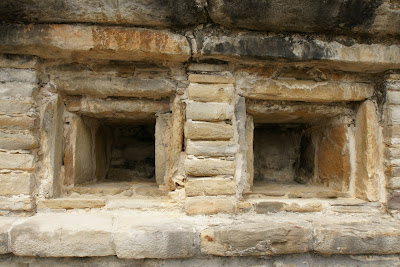
As such, April was a month of archaeological tours: Quiahuixtlan, Cantona and El Tajin.
Among niches, cornices and slope rages on my visit that old summer of 2008 to the "CITY OF THUNDER." Today, I return to it without the rush of yesterday. Today, beautiful oak and jacaranda pink spring dress.
open Pyramids resemble a beautiful fan blowing a familiar story for us from the primary or books narrated by the grandfather s.

Its extraordinary architecture belongs to the Totonac culture developed in the period from 750 to 950 d. Epi C. Located on the coastal plain of the Gulf of Mexico just 8 kilometers from the city of Papantla, Veracruz, in the upstate. We watched the ledge gives a beautiful finished most of the buildings.

El Tajin Totonac language means "thunder." Prominent urban center in the region appreciated for its unique architectural style, based on niches and friezes.
 The pyramid of "niche" is the symbol of El Tajin: 365 niches, the associated integrated solar calendar.
The pyramid of "niche" is the symbol of El Tajin: 365 niches, the associated integrated solar calendar. 
Archaeologists divide its construction phase in four steps: URBAN PRE , was built the Plaza del Arroyo, stage CONSOLIDATION covering the construction of buildings north of the Plaza, Phase URBAN EXPANSION of characterized by the greatest flowering of the city and finally the process of DESTRUCTION or abandonment of the city.

 City, civic and religious center of a privileged elite.
City, civic and religious center of a privileged elite. 
 17 ball games have been located. His sport is given a ritual and political role, associated with human sacrifice.
17 ball games have been located. His sport is given a ritual and political role, associated with human sacrifice. 

 The Xicalcoliuhqui represents a vast wall of a hectare enabled courts to the ball game.
The Xicalcoliuhqui represents a vast wall of a hectare enabled courts to the ball game. 


For its architectural beauty, history and conservation, archaeological site El Tajin is a Cultural Heritage Site since 1992, custody of the National Institute of Anthropology and History and the Institute of Anthropology at the Universidad Veracruzana, conquers the visitors.
0 comments:
Post a Comment